
Defense, intelligence, and IT solutions provider CACI International (NYSE:CACI) reported Q2 CY2025 results topping the market’s revenue expectations, with sales up 13% year on year to $2.30 billion. The company expects the full year’s revenue to be around $9.3 billion, close to analysts’ estimates. Its non-GAAP profit of $8.40 per share was 27.7% above analysts’ consensus estimates.
Is now the time to buy CACI? Find out by accessing our full research report, it’s free.
CACI (CACI) Q2 CY2025 Highlights:
- Revenue: $2.30 billion vs analyst estimates of $2.29 billion (13% year-on-year growth, 0.5% beat)
- Adjusted EPS: $8.40 vs analyst estimates of $6.58 (27.7% beat)
- Adjusted EBITDA: $264.5 million vs analyst estimates of $261.6 million (11.5% margin, 1.1% beat)
- Adjusted EPS guidance for the upcoming financial year 2026 is $27.58 at the midpoint, beating analyst estimates by 0.9%
- Operating Margin: 9%, in line with the same quarter last year
- Free Cash Flow Margin: 5.6%, down from 6.6% in the same quarter last year
- Backlog: $31 billion at quarter end, down 1.9% year on year
- Market Capitalization: $10.45 billion
Company Overview
Founded to commercialize SIMSCRIPT, CACI International (NYSE:CACI) offers defense, intelligence, and IT solutions to support national security and government transformation efforts.
Revenue Growth
Examining a company’s long-term performance can provide clues about its quality. Any business can put up a good quarter or two, but the best consistently grow over the long haul. Luckily, CACI’s sales grew at a decent 8.6% compounded annual growth rate over the last five years. Its growth was slightly above the average industrials company and shows its offerings resonate with customers.
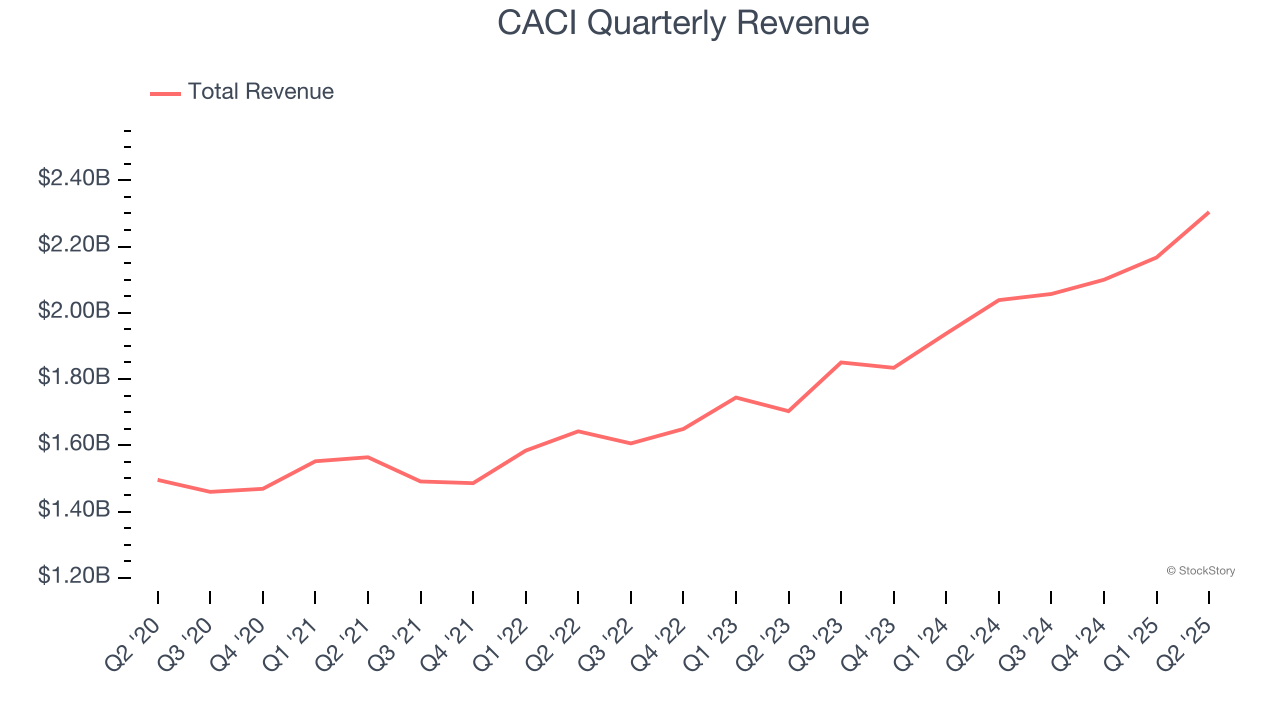
We at StockStory place the most emphasis on long-term growth, but within industrials, a half-decade historical view may miss cycles, industry trends, or a company capitalizing on catalysts such as a new contract win or a successful product line. CACI’s annualized revenue growth of 13.5% over the last two years is above its five-year trend, suggesting its demand recently accelerated. 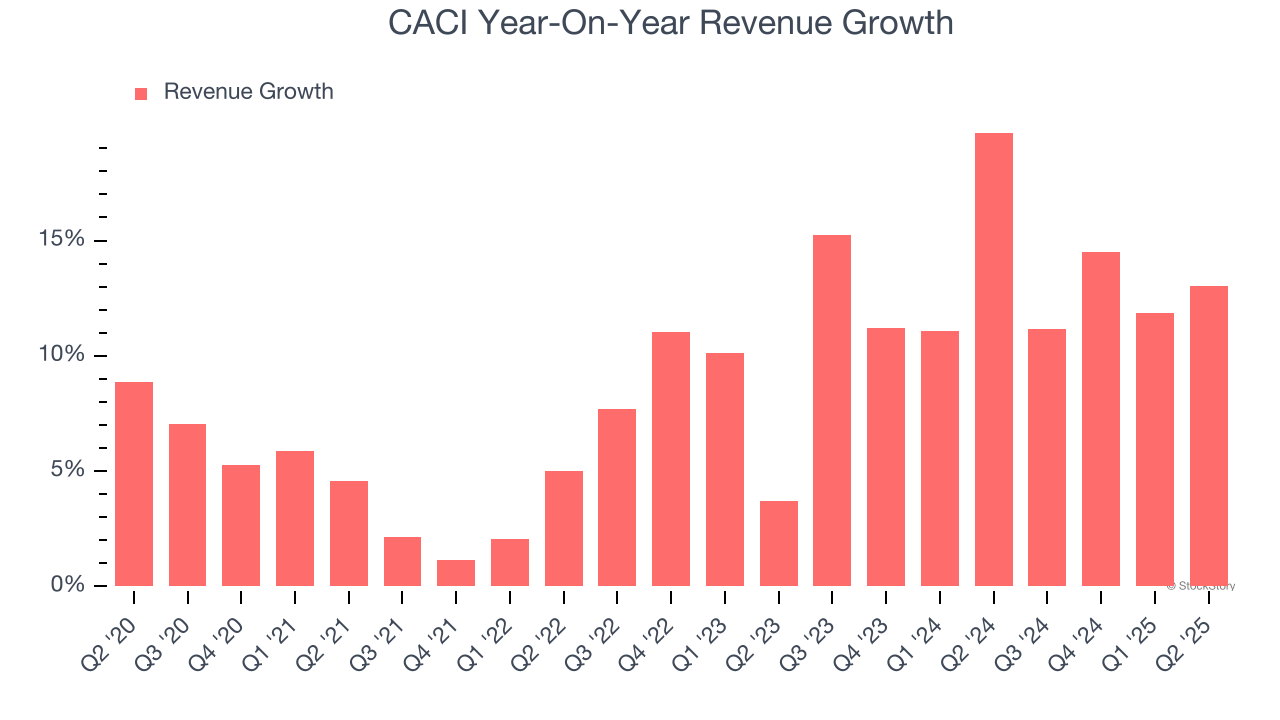
CACI also reports its backlog, or the value of its outstanding orders that have not yet been executed or delivered. CACI’s backlog reached $31 billion in the latest quarter and averaged 11.5% year-on-year growth over the last two years. Because this number is lower than its revenue growth, we can see the company fulfilled orders at a faster rate than it added new orders to the backlog. This implies CACI was operating efficiently but raises questions about the health of its sales pipeline. 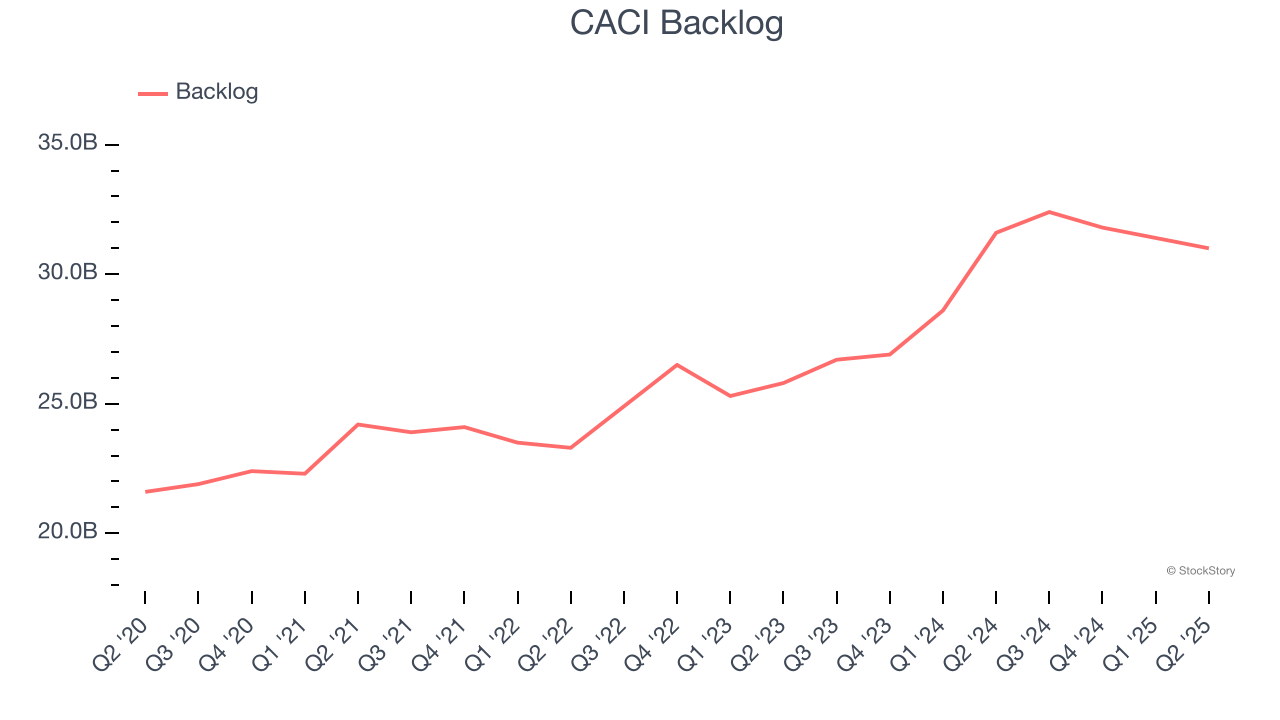
This quarter, CACI reported year-on-year revenue growth of 13%, and its $2.30 billion of revenue exceeded Wall Street’s estimates by 0.5%.
Looking ahead, sell-side analysts expect revenue to grow 7.2% over the next 12 months, a deceleration versus the last two years. This projection doesn't excite us and indicates its products and services will see some demand headwinds. At least the company is tracking well in other measures of financial health.
Today’s young investors won’t have read the timeless lessons in Gorilla Game: Picking Winners In High Technology because it was written more than 20 years ago when Microsoft and Apple were first establishing their supremacy. But if we apply the same principles, then enterprise software stocks leveraging their own generative AI capabilities may well be the Gorillas of the future. So, in that spirit, we are excited to present our Special Free Report on a profitable, fast-growing enterprise software stock that is already riding the automation wave and looking to catch the generative AI next.
Operating Margin
Operating margin is a key measure of profitability. Think of it as net income - the bottom line - excluding the impact of taxes and interest on debt, which are less connected to business fundamentals.
CACI’s operating margin might fluctuated slightly over the last 12 months but has remained more or less the same, averaging 8.6% over the last five years. This profitability was higher than the broader industrials sector, showing it did a decent job managing its expenses.
Analyzing the trend in its profitability, CACI’s operating margin might fluctuated slightly but has generally stayed the same over the last five years. This raises questions about the company’s expense base because its revenue growth should have given it leverage on its fixed costs, resulting in better economies of scale and profitability.
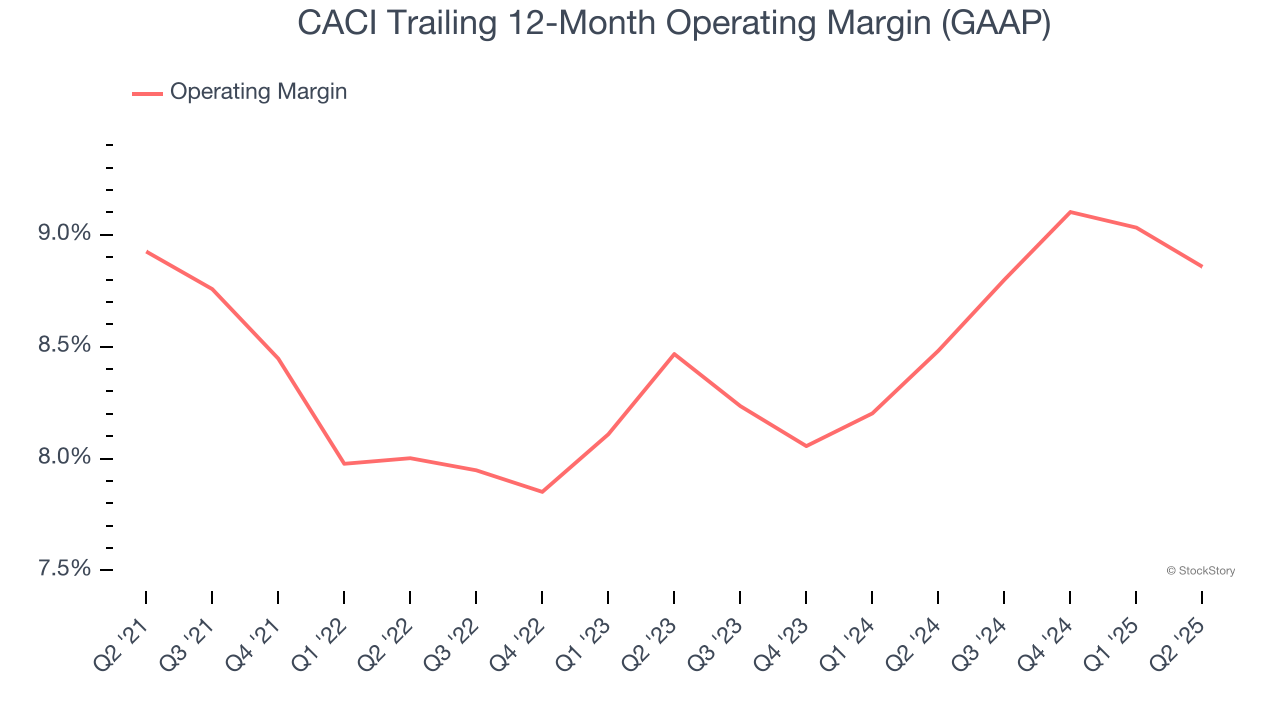
In Q2, CACI generated an operating margin profit margin of 9%, in line with the same quarter last year. This indicates the company’s overall cost structure has been relatively stable.
Earnings Per Share
We track the long-term change in earnings per share (EPS) for the same reason as long-term revenue growth. Compared to revenue, however, EPS highlights whether a company’s growth is profitable.
CACI’s EPS grew at a remarkable 13.1% compounded annual growth rate over the last five years, higher than its 8.6% annualized revenue growth. However, this alone doesn’t tell us much about its business quality because its operating margin didn’t improve.
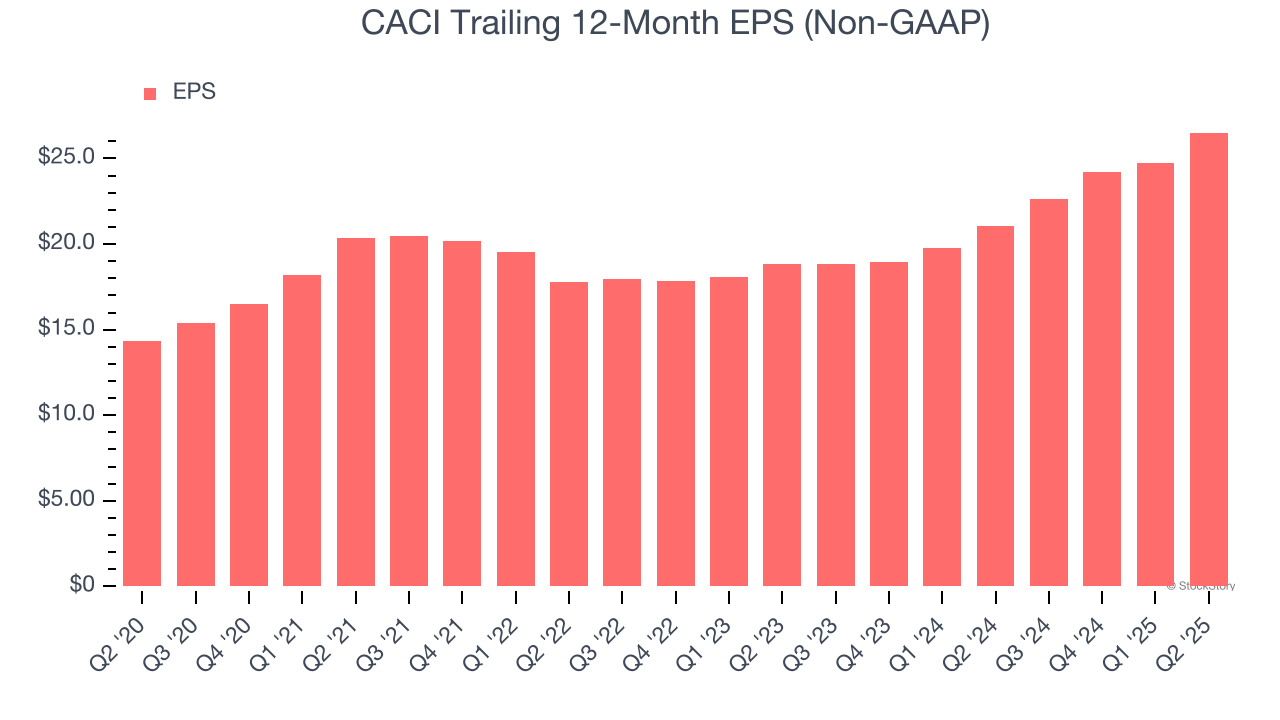
Diving into the nuances of CACI’s earnings can give us a better understanding of its performance. A five-year view shows that CACI has repurchased its stock, shrinking its share count by 13.3%. This tells us its EPS outperformed its revenue not because of increased operational efficiency but financial engineering, as buybacks boost per share earnings. 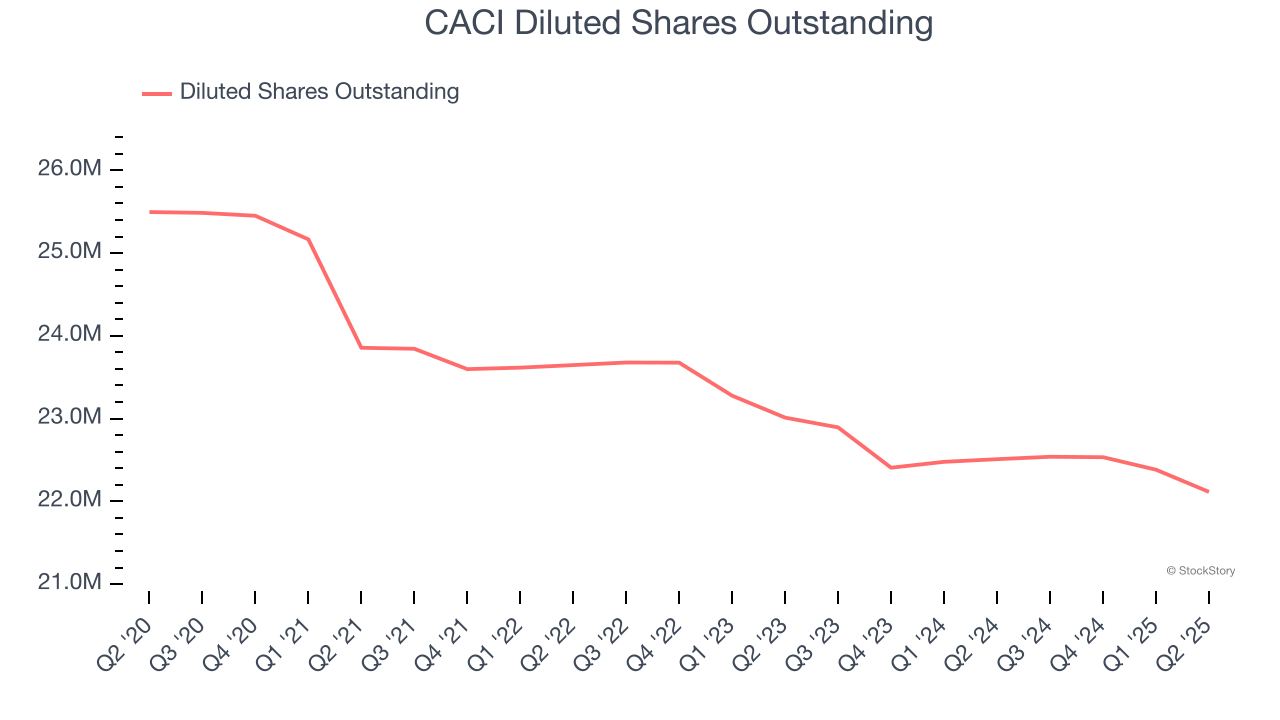
Like with revenue, we analyze EPS over a shorter period to see if we are missing a change in the business.
For CACI, its two-year annual EPS growth of 18.6% was higher than its five-year trend. We love it when earnings growth accelerates, especially when it accelerates off an already high base.
In Q2, CACI reported adjusted EPS at $8.40, up from $6.61 in the same quarter last year. This print easily cleared analysts’ estimates, and shareholders should be content with the results. Over the next 12 months, Wall Street expects CACI’s full-year EPS of $26.51 to grow 2.8%.
Key Takeaways from CACI’s Q2 Results
We were impressed by how significantly CACI blew past analysts’ EPS expectations this quarter. We were also glad its full-year EPS guidance slightly exceeded Wall Street’s estimates. On the other hand, its backlog missed. Zooming out, we think this was a mixed quarter. The stock remained flat at $475.29 immediately after reporting.
Should you buy the stock or not? When making that decision, it’s important to consider its valuation, business qualities, as well as what has happened in the latest quarter. We cover that in our actionable full research report which you can read here, it’s free.
